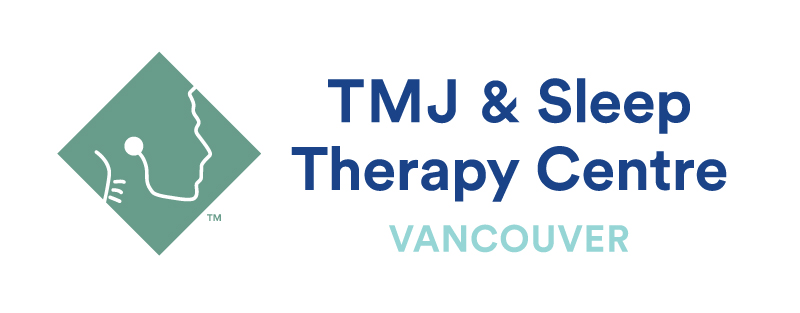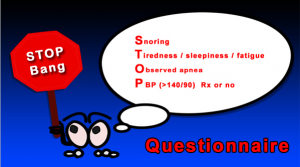A recent study conducted by Université Laval researchers under the supervision of Dr. Charles M. Morin have found that 40% of adult Canadians suffer from sleep disorders; this is the total of all sleep disorders. An estimated 25% of those do suffers from the most common form of sleep disorder: Obstructive Sleep Apnea (OSA).
Regardless of the type of sleep disorder, the impact on individuals is considerable. Clinically, people suffering from sleep disorders have an increased likelihood of cardiovascular disease, hypertension and mortality. At the same time, these individuals experience reduced cognitive performance that lowers job performance, decreases their quality of life and makes them ten times more likely to be in an automobile accident. These individuals are more susceptible to work-related injuries, depression and family discord.
Obstructive Sleep Apnea (OSA)
OSA is a multifactorial condition produced by combination of anatomical and physiological factors. It is characterised by repetitive complete or partial closure of the upper airway during sleep resulting in sleep fragmentation, daytime sleepiness, fatigue, and decreased oxygen levels. This usually results in an overload of several organs and it is linked to many diseases like: hyper tension, cardio-vascular problems, stroke, diabetes, heart-burn (GERD), memory loss, depression, increased risk for motor vehicle accidents and weight gain. It is more common in overweight men and in post-menopausal women. There are several options for treatment of OSA for adults and this depends on the severity of the OSA. CPAP and oral appliances are the most common therapies; these options will be discussed later.
In children enlarged tonsils and adenoids is the most common cause for OSA. Apnea in children is linked to conditions like ADHD, impaired physical and mental development, impaired craniofacial growth and bedwetting.
There are 2 other forms of Apnea: Central Apnea and Mixed Apnea.
Central Apnea
Central apnea is characterized by the lack of breathing drive form the central nervous system; air does not get into the lungs because the chest and diaphragm do not receive signals from the nervous system. This condition does not respond to oral appliance therapy.
Mixed Apnea
The third type is: Mixed Apnea. It is a condition where both types of the apneas are present; oral appliances can be beneficial pending the recommendations from the sleep specialist.
Definitions
- Apnea: complete cessation of airflow for 10 seconds or more.
- Hypopnea: decreased airflow accompanied by desaturation of blood oxygen levels.
- Apnea- Hypopnea index (AHI): the total number of Apnea and Hypopnea events during sleep divided by the hours of sleep. AHI is most commonly used to determine how severe the OSA is.
AHI of less than 5 is considered normal reading for an adult.
What is Snoring?
It is the vibration of the soft tissues of the pharynx, soft palate and the uvula during inspiration and expiration. It is very common in middle aged adults especially if they are overweight. 20% of patients who snore may also suffer from obstructive sleep apnea (OSA). In the pediatric population, primary snoring should be investigated right away, since children should not be snoring unless they have a cold and accompanied by acute nasal congestion.
What are the symptoms of OSA?
Patients will report that they are tired, have morning headaches and maybe jaw pain, complain of daytime sleepiness and wake up unrefreshed. They also report of difficulty falling asleep and staying asleep and have to go to the bathroom several times during the night. Patients note that they have been told by their sleep partners that they snore loud enough to disturb their partner’s sleep, often making choking noises and gasping for air while asleep and even have episodes when they stop breathing momentarily.
How is it diagnosed?
Sleep apnea is a medical condition and the diagnosis can only be done by a medical sleep specialist. The diagnostic procedure starts with patient questionnaires covering everything from medical history to day time alertness. A physical and dental examination will be done to asses any airway issues with the nose and mouth. Based on the findings, the patient will be referred by the medical doctor for a sleep study. The sleep specialist determines what type of sleep study is the most appropriate for the patient; this can be a full polysomnogram (PSG) in a sleep center or portable home sleep study (HST).
The result of the sleep study will be interpreted by the sleep specialist and a diagnosis and treatment recommendation is made. The most common score to determine the severity of the OSA is the AHI (Apnea Hypopnea Index).
AHI classification for adults according to the AASM (American Academy of Sleep medicine)
- 0-5 normal
- 5-15 mild
- 15-30 moderate
- 30 and higher severe
What Treatments are available?
 Continuous positive airway pressure (CPAP): this is a machine that blows air into the nose to maintain patency of the airway.
Continuous positive airway pressure (CPAP): this is a machine that blows air into the nose to maintain patency of the airway. Oral appliances: most oral appliances will position the lower jaw slightly forward to open the pharyngeal airway.
Oral appliances: most oral appliances will position the lower jaw slightly forward to open the pharyngeal airway.- Lifestyle changes: weight loss and sleeping on the side is the often recommended.
- Surgical approach ranges from removal of tonsils, removal of uvula to orthognatic surgery.
According to the guidelines set by the AASM and AADSM (American Academy of Dental Sleep Medicine) the following treatment options are available:
| AHI 5-15 | Mild OSA | Oral appliances | |
| AHI 15-30 | Moderate OSA | CPAP | Oral appliances |
| AHI 30 or higher | Severe OSA | CPAP | Oral appliances when CPAP intolerant |
http://youtu.be/gsOjwqxB0pY
http://youtu.be/FTuFZLrbeTQ
What are oral appliances?
Oral appliances are dental acrylic appliances that are custom designed and made to fit the patient’s upper and lower jaws position the mandible slightly forward. There are many designs available to fit the oral anatomy of an individual mouth. They are not visible, are easy to travel with, do not need any power and are in general better tolerated than CPAP. These oral appliances have a life span ranging from 1- 5 years and do require regular maintenance.
Who should make these appliances?
According to the guidelines set by the College of Dental Surgeons of BC and the Canadian Sleep Society these appliances should be made by dentists who have received extra training in treating patients with sleep disorder breathing and craniofacial pain. Canadian Sleep Society Guidelines
ARE YOU AT RISK AT HAVING OSA?
This simple questionnaire is helpful to find out if you might have OSA.
Please take a few moments to fill out this STOP BANG Questionnaire or visit the official website:
STOP
S – Snore Loudly
T – Tired during the day
O – Observed/witnessed to have stopped breathing
P – High Blood Pressure
Yes to two or more of the above is at risk for sleep apnea.
BANG
Four Additional Questions (Bang):
B – Body mass index (>28)
A – Age (>50 years)
N – Neck size male (≥17 inches for men, ≥16 inches for women)
G – Gender (Are you male?)
Add one or more from the above and you at increased risk for moderate to severe sleep apnea.
OSA – Hight Risk : Score is 5 – 8
OSA – Intermediate Risk : Score is 3 or 4
OSA – Low Risk : Score is 0 – 2

